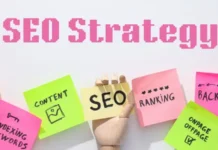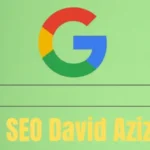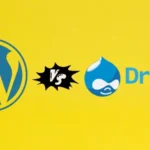Pay-per-click advertising, often PPC, is a cornerstone of today’s digital landscape. This is how companies present their ads to potential customers online. From search engines to social media platforms, PPC is everywhere. But is this the right strategy for your business? Below, we explore this powerful tool and see if it aligns with your goals and objectives.
What is pay-per-click advertising?
PPC advertising is a powerful digital marketing strategy. It’s all about driving targeted traffic to your website, but how does it work?
The pay-per-click ad model is where businesses pay a fee each time their ad is clicked. It is like a digital auction, where advertisers bid for ad placement on various platforms.
How PPC Ads Rank High on Search Engine Results Pages (SERPs)
PPC ads are those sponsored listings at the top and bottom of search engine results pages (SERPs).
They are displayed prominently, ensuring that the business captures the attention of potential customers when they search for relevant keywords. This positional property can make or break your online visibility.
Google Ads: the cornerstone of PPC advertising
Google Ads is a powerful tool for businesses to reach their target audience with PPC advertising. Let’s examine how to get the most out of this powerful platform.
Getting started with Google Ads is a simple process. Follow these steps:
- Create a Google Ads account: Click “Get Started.” Then, sign in with your existing Google account or create a new one.
- Choose your campaign type: Navigate to the Campaigns icon within your Google Ads account. Click Campaigns and then the More button to add a new campaign. Select your advertising objective and goal to determine your campaign type.
- Set up your campaign: Configure your location, language, and ad scheduling settings. Next, decide your advertising budget and select a bidding strategy.
- Set up ad groups and keywords: The next step is to create ad groups around related keywords relevant to your products or services.
- Create ads: You must design your ad content to include powerful headlines, engaging descriptions, and relevant display URLs. Ensure your ads match your chosen keywords and direct visitors to relevant landing pages.
- Set up ad extensions: You’ll need to use ad extensions to help improve the visibility of your ad. Ad extensions provide additional information about your business, such as contact details or links to other web pages.
- Review and launch your campaign: Before launching your ads, review all campaign elements, including settings, ad groups, keywords, and ads.
- Monitor and optimize: Keep a close eye on your active ads and monitor the performance of your campaign. Make sure you make the necessary changes. This may include modifying your keywords, adjusting bids, or testing new ad variations.
Strategies to optimize your Google Ads campaigns
To optimize your Google Ads PPC campaigns, start by conducting research using keyword research tools. Create compelling ad copy that aligns with searcher intent and consider using ad extensions for added visibility. Periodically analyze performance data and refine your strategies based on what works best.
Venture beyond Google: explore other PPC platforms
While Google Ads reign supreme, a world of PPC opportunities exists beyond, like Bing Ads. Broaden your horizons and discover alternative platforms that have their own unique features, such as:
- Microsoft Ads: Microsoft’s search engine, Bing, often offers competition and lower costs than Google, making it a budget-friendly option. Plus, it reaches users who may not use Google.
- YouTube Ads: Leveraging the power of video, YouTube ads are great for brand awareness and storytelling and serve a wide and diverse audience.
- Facebook Ads: With precise targeting options, Facebook Ads are perfect for reaching specific demographic groups.
- Instagram Ads: Instagram is ideal for businesses with visually appealing products, from fashion to food.
- X Ads: X Ads are great for timely promotions, event marketing, and building brand awareness.
- LinkedIn Ads: If you’re in the B2B space, LinkedIn ads are great for reaching professionals and decision-makers directly.
The advantages of PPC advertising
Let’s talk about why PPC advertising is a game-changer.
Budget, measurability and agility: The triple whammy. One of the best things about PPC is the control it gives you over your budget. You decide how much you want to spend, so there are no surprises. Plus, measuring what works and what doesn’t is very easy. This means you can make quick changes on the fly to get the best bang for your buck.
Precision targeting and SERP mastery: Your secret weapon. PPC allows you to target your ideal clients with precision. You can target specific demographics, interests, and behaviors. And here’s the kicker: your ads get a prime spot on search engine results pages (SERPs). It’s like having the best spot in a crowded market. It makes you stand out and captures the attention of potential customers, giving you a huge advantage in online gaming.
Keyword Mastery: Choosing the right words to generate traffic. Selecting the perfect keywords is like finding the right key for a lock. It is crucial to open the doors to your target audience. Research, relevance and refinement are your allies in this effort.Sculpt captivating copy and irresistible CTAs: Your ad text is your voice in the digital realm. Craft it carefully, ensuring it resonates with your audience’s needs and wants. Create amazing calls to action (CTAs) that invite action. Remember, words have the power to drive action.









![Imginn Instagram Story and Photos Anonymous Viewer Tool [Free] Imginn](https://www.iblogtech.com/wp-content/uploads/2023/09/imginn-150x150.webp)




